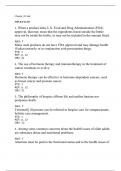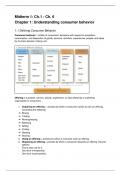Summary
Summary ECS2605, EXAM PACK 2022 (4 in 1 Package) Study notes, 2 Previous Exam Papers and Calculation Elaborations
- Course
- Institution
- Book
This document includes summary notes that cover 100% of the subject, calculation elaborations with many examples, and 2 exam paper examples.
[Show more]












